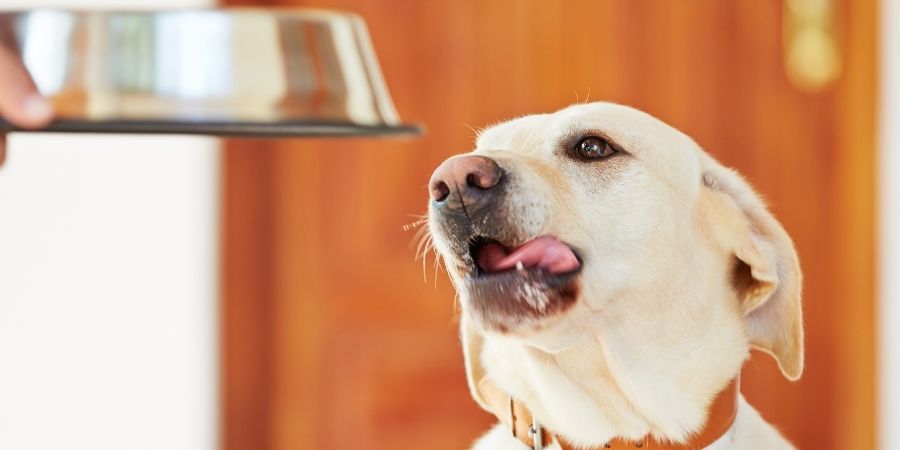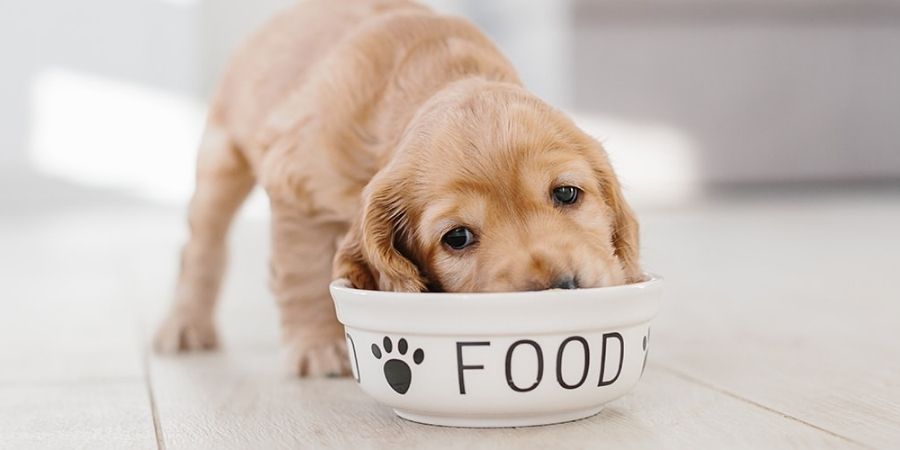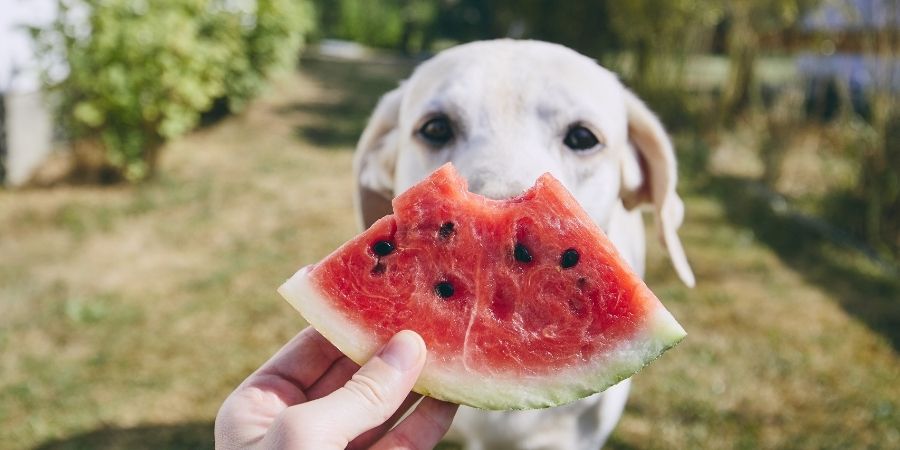First and foremost, if you’re unsure what to feed your dog, we’d always recommend talking to your vet or vet nurse – they’ll be able to give you the best advice, tailored to your dog’s individual needs. This is especially important if your dog has a medical problem that might be affected by what they eat, such as a food allergy/intolerance, or conditions such as diabetes or kidney disease.
Should I feed a complete diet?
Our vets always recommend feeding an appropriate amount of a good quality, commercially available, complete dog food that’s right for their life stage. Complete dog foods come in many forms – wet food, dry biscuits/kibble, raw, grain free and vegetarian – the list is endless! The one thing they all have in common is that they provide your dog with all the nutrients, vitamins and minerals required for your doggy to be a healthy pup – everything they need from their food.
These foods will labelled as ‘complete’ on the packaging, making it nice and easy to find! When selecting a food, look for a manufacturer that is a member of the Pet Foods Manufacturers Association (PFMA), who make sure their members meet some higher standards than the legal minimum.
Just remember, if you’re feeding a few different brands or types of complete food, always check the packet’s feeding instructions to make sure you don’t overfeed your dog!

What is a complementary diet or mixer?
Although the two names share similar letters, a complementary food is the opposite of a complete diet. It’s really important to understand the distinction between the two as it’s the first step to finding the ideal diet for your pup!
Unlike complete diets, complementary foods don’t contain the full mix of nutrients needed by a dog to be healthy. Instead, they need to be fed alongside other foods to form a complete diet.
Just like complete foods, look out for a ‘complementary’ label on packets, as this will tell you what diet your pup’s food falls under. Some complementary diets will look similar to complete diets – mixer biscuits look very similar to complete biscuits for example, so it’s important to read the packaging closely so you know which type of food you are buying.
Additional foods such as training treats and dental chews also class as complementary food, meant to be given alongside a complete diet. Don’t forget to cut down your dog’s normal diet if you’re giving them a complementary food of any sort and make sure the bulk of what they eat is their complete diet so they get the right balance of nutrients.
Wet food or dry food?
With so many different types of food available for your pup, it can be difficult to know whether to feed them wet or dry foods. There are pros and cons to each food, which can help you decide what’s right for you and your doggy!
Wet food
Wet foods are very popular, and often dogs will prefer them to dry foods. However, they do tend to be more expensive per portion as the daily amount of food is usually higher. Wet food will also go off quickly, so always make sure any food put down for your dog is eaten and not left out, especially in warm weather.
Dry food
Dry foods on the other hand are normally cheaper per portion than a wet food equivalent and the daily amount your dog will need is often less. They’re easier to feed and store, as they last longer once the packet has been opened. Dry food can also help to keep your dog’s teeth clean, as biscuits can help prevent any build-up of plaque on your pooch’s teeth.
Some doggies will love dry food, but many dogs find it less tasty than wet food and they might graze on the biscuits throughout the day instead of eating it as one big meal. Dry food can also be great in puzzle feeders which help keep your dog’s brain active as well as slowing down their meals.
Many people will feed their dog a combination of wet and dry food. To make sure they’re getting the right amount of each, work out what percentage of food will be wet and dry then calculate the correct weight of each diet. For example, if you’re doing half wet food and half dry food, look at the daily feeding guides on each packet and divide it by two so they get half their nutrients from the wet and half from the dry.
Your vet may recommend feeding your dog only wet or only dry food if they have certain medical conditions. If your dog has a medical problem and you’re unsure which diet is best, seek your vet’s advice.

Raw feeding
Raw feeding involves feeding your dog raw ingredients, rather than cooked food. Many companies have created complete raw diets, which are now stocked in most popular pet shops. Raw food is available in different varieties but is usually either freeze-dried or frozen, and must be thoroughly defrosted before feeding.
If you choose to feed your dog raw food, our vets always recommend feeding a good quality commercially prepared, complete food rather than making the food yourself – it’s very difficult to make sure your dog has the correct balance of nutrients with a homemade diet.
Can my dog eat a vegetarian diet?
If you’re vegetarian or vegan, it can be a real moral dilemma as to what to feed your dog! Dogs are omnivores, which means they can eat both meat and plant-based foods – so it is possible to feed your dog a commercial vegetarian or vegan dog food that is a balanced diet. In fact, some hypoallergenic dog food contains no animal products, even though they aren’t marketed as being vegetarian or vegan!
Speak to your vet before feeding a vegetarian or vegan diet, as some doggies have dietary requirements that can’t be met on a plant-based diet.

Regardless of the diet you choose for your pooch, changing your dog’s food can sometimes upset their tummy. Remember to always change any diet gradually, by slowly introducing the new food.
Take a look at our Pet Store for our varied range of dog foods!
